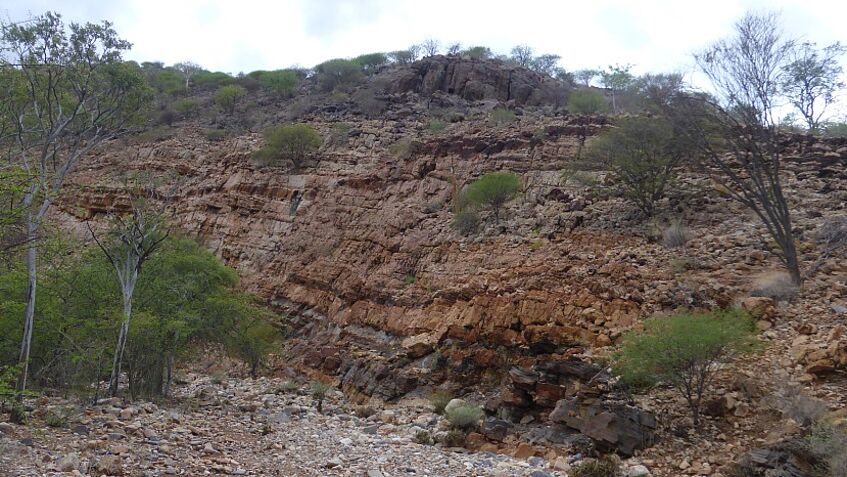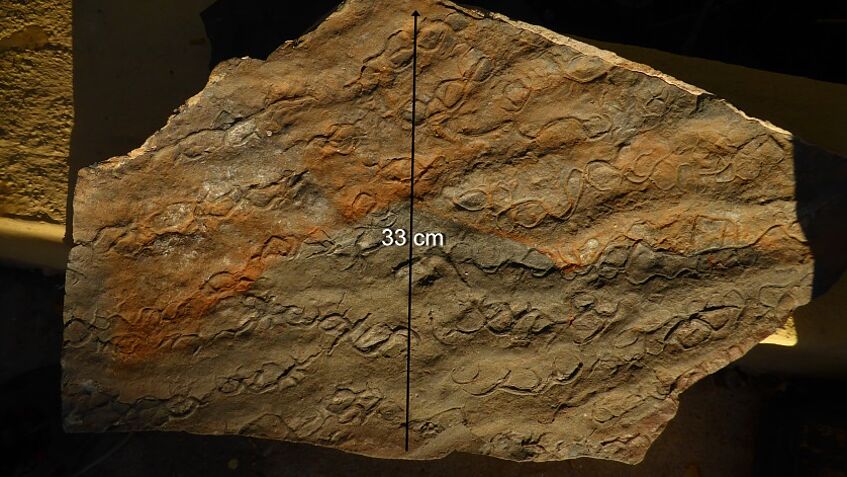Neoproterozoic carbonate – clastic sequences of Namibia
Research Team:
Daniel Smrzka
Friedrich Popp
Daniel Le Heron
Flora Saerberg
Gabriella Kiss
Neoproterozoic sedimentary successions, such as those from Death Valley, share unusual stratigraphic features such as the occurrence of distinctive glacial deposits related to high-frequency intercalations between carbonate and clastic sequences.
The Otavi Group from the Otavi Fold Belt in Namibia features large-scale well-exposed deposits that record the two largest episodes of glaciation in the Neoproterozoic.
Specifically, the pre-glacial successions that led up to the largest glacial episodes in Earth history are still poorly understood.

Carbonate – clastic sequences from the Neoproterozoic Devede Formation, Namibia (© F. Popp).
The Otavi successions were deposited in sedimentary rift-related basins that developed large shallow marine deposits as a consequence of large-scale marine transgressions.
The Ombombo Subgroup exhibits numerous series of thick carbonate – clastic deposits comprising a large range of clastic deposits ranging from fine-grained shales to boulder-containing conglomerates, and may reach regional thicknesses of almost 3000m.
The Devede Formation, which conformably overlies shale – carbonate successions and underlies shale – sandstone successions, thus is sandwiched between highly dynamic depositional environments suggesting relatively rapid changing environmental conditions.
The carbonates from the Devede Formation comprise pink dolostones that locally interbedded with sand- and siltstones, stromatolitic dolostones, as well as ooid to pisoid grainstones.
Preliminary field and stable isotope data obtained by the Carbonate Sedimentology group yield highly variable stable isotope anomalies, suggesting small-scale changes in carbonate depositional environments leading up to the first of two major worldwide glaciations.

Sedimentological features from the carbonate – clastic sequences in the Neoproterozoic Devede Formation, Namibia (© F. Popp).
